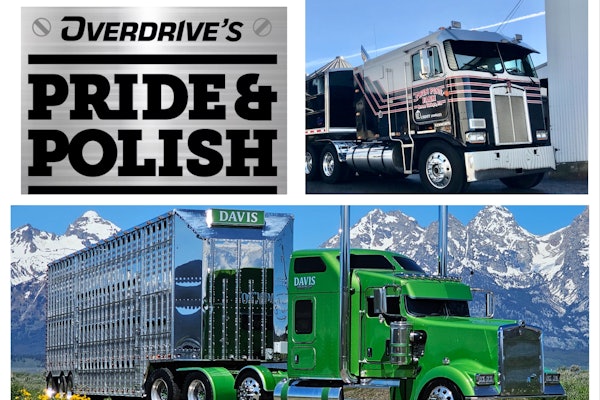Trucking news and briefs for Wednesday, June 5, 2024:
Washington state warns of carbon monoxide dangers following trucker’s death
The Washington State Department of Labor and Industries is warning truck drivers of the potential dangers of carbon monoxide poisoning following the June 1 death of a truck driver.
According to the department’s Fatality Assessment and Control Evaluation (FACE) Program, a 61-year-old truck driver died from carbon monoxide (CO) poisoning after a long rest break in his truck. He was parked at his employer’s terminal for approximately 24 hours and slept overnight in the truck’s sleeper berth.
“Around 9:30 a.m., he walked from his truck to the main terminal building,” a FACE report said. “Another driver saw him struggling to open a door to the employee restroom and shower area. The driver helped him with the door but saw he was disoriented and having difficulty breathing, walking, and standing.”
After calling 911, first responders arrived and took the driver to the hospital, where the driver later died. The toxicology report concluded he died from CO poisoning.
 These butane fuel bottles, which have a carbon monoxide hazard warning label, were found inside the truck of the driver who died from carbon monoxide poisoning.Washington State FACE
These butane fuel bottles, which have a carbon monoxide hazard warning label, were found inside the truck of the driver who died from carbon monoxide poisoning.Washington State FACE
- The driver was most likely poisoned by CO from a single-burner butane cooking stove found in the truck.
- The sleeper had a bunk heater with a small diesel-powered blower motor. Air monitoring in the sleeper and near the heater's exhaust while it was running did not show any significant amount of CO.
- No exhaust leaks were detected in the truck's engine or undercarriage area.
[Related: $50 and a little install work could save your life: Trucker Scott Carlson's close call]
FACE investigators concluded that, to help prevent similar occurrences, employers and drivers should:
- Install battery-powered CO detector alarms in truck cabs and sleeper berths. Use only detectors made for vehicles.
- Develop and enforce clearly written accident prevention program (APP) policies for CO poisoning prevention. Policies should:
- Train and evaluate drivers’ knowledge about CO hazards, exposure sources, prevention methods, detector alarms, poisoning symptoms, and emergency responses. Conduct periodic refresher training.
- Perform regularly scheduled preventive maintenance checks and services on engine and bunk heater exhaust systems to ensure CO leaks are detected and repaired before the truck is returned to service.
1) Prohibit use of butane, propane, and other fuel-burning cooking stoves and space heaters inside cabs, sleepers, and trailers. Fuel canisters can produce CO, a colorless, odorless, and tasteless toxic gas that can quickly, and without warning, cause brain and heart damage, unconsciousness, and suffocation. 2) Require drivers whose CO alarm has activated to park and exit their truck immediately, get into fresh air, and have a repair shop tow and check their truck for CO leaks. Call 911 if the driver feels poisoned. 3) Instruct drivers to avoid idling or parking near other trucks that are idling or using auxiliary power units (APUs) producing exhaust fumes. Such fumes can enter a truck even if windows and vents are closed. (This practice can obviously be difficult in a truck stop setting.)
Paccar’s MX-13 now CARB Low-NOx-compliant
 Paccar's new MX-13 is compliant with CARB's low nitrogen oxide (NOx) regulations.Peterbilt
Paccar's new MX-13 is compliant with CARB's low nitrogen oxide (NOx) regulations.Peterbilt
Paccar on Tuesday announced the availability of a new MX-13 engine that is compliant with the California Air Resources Board’s low nitrogen oxide (NOx) regulations. The engine meets the CARB Omnibus Regulation and features redesigns of internal hardware and the aftertreatment system to effectively reduce NOx emissions.
The larger-volume aftertreatment system includes an innovative compact twin assembly, featuring a 48-volt generator located in the flywheel housing, and an electrical heater located in the inlet to provide lower NOx output.
The internal hardware now features a larger volume mixer, longer selective catalytic converter and an improved and more durable NOx sensor design with increased longevity for improved uptime. These features allow Paccar customers to achieve increased engine efficiency and fuel economy while continuing to meet stringent CARB emissions regulation, the company said.
The CARB low NOx compliant Paccar MX-13 engine is available in two ratings with a flat torque curve providing performance across a wider range of rpms for drivability and fuel economy. This includes a high performance 510-horsepower rating with 1,850 lb.-ft. of torque, and an efficiency-focused rating of 455 horsepower and 1,650 lb.-ft. of torque between 900 and 1,325 rpm.
Peterbilt Models 579, 567 and 589 with the new MX-13 engine are available for orders now. Kenworth has not yet announced availability of the updated engine in its models.
[Related: CARB, truck and engine OEMs enter partnership to meet clean air goals]
I-17 NB closed this weekend near Phoenix
NB Interstate 17 is scheduled to be closed this weekend, June 7-10, between Happy Valley Road and Loop 303 in north Phoenix for pavement improvement work, according to the Arizona Department of Transportation.
Drivers should allow extra time, consider traveling during non-peak morning or nighttime hours and stay on the designated detour route, ADOT said. The closure will last from 10 p.m. Friday to 5 a.m. Monday. On-ramps at Deer Valley and Pinnacle Peak roads also will be closed.
The posted detour follows WB Happy Valley Road to NB Lake Pleasant Parkway and EB Loop 303 back to I-17. The reverse of this route moved traffic efficiently throughout last weekend’s SB I-17 closure between Loop 303 and Happy Valley Road, ADOT noted.
The department also said truck drivers can consider using I-10 in the West Valley to NB Loop 303 as an alternate detour route.
ADOT said crews are continuing a much-needed project to improve the ride on 6 miles of I-17 between Happy Valley Road and State Route 74. This is the last of an initial series of four weekend closures so crews can safely and effectively remove the surface asphalt and clear as much dust and debris as possible before the freeway reopens. Additional I-17 closures or lane restrictions will be needed as the work proceeds.








